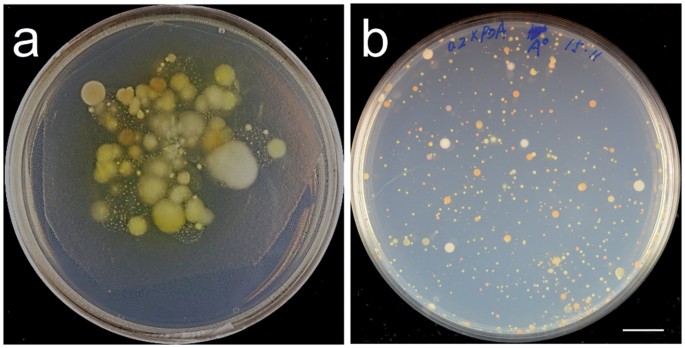
- Select a language for the TTS:
- UK English Female
- UK English Male
- US English Female
- US English Male
- Australian Female
- Australian Male
- Language selected: (auto detect) - EN
Play all audios:
ABSTRACT In most eukaryotes, poly(ADP-ribose) polymerase (PARP) recognizes DNA strand interruptions generated _in vivo_. DNA binding by PARP triggers primarily its own modification by the
sequential addition of ADP-ribose units to form polymers; this modification, in turn, causes the release of PARP from DNA ends1. Studies on the effects of the disruption of the gene encoding
PARP (_Adprt1_, formerly _Adprp_) in mice have demonstrated roles for PARP in recovery from DNA damage and in suppressing recombination processes involving DNA ends1,2,3,4,5. Telomeres are
the natural termini of chromosomes and are, therefore, potential targets of PARP. Here, by the use of two different techniques, we show that mice lacking PARP display telomere shortening
compared with wild-type mice. Telomere shortening is seen in different genetic backgrounds and in different tissues, both from embryos and adult mice. _In vitro_ telomerase activity,
however, is not altered in _Adprt1__–/–_ mouse fibroblasts. Furthermore, cytogenetic analysis of mouse embryonic fibroblasts reveals that lack of PARP is associated with severe chromosomal
instability, characterized by increased frequencies of chromosome fusions and aneuploidy. The absence of PARP does not affect the presence of single-strand overhangs, naturally present at
the ends of telomeres. This study therefore reveals an unanticipated role for PARP in telomere length regulation and provides insights into its functions in maintaining genomic integrity.
Access through your institution Buy or subscribe This is a preview of subscription content, access via your institution ACCESS OPTIONS Access through your institution Subscribe to this
journal Receive 12 print issues and online access $209.00 per year only $17.42 per issue Learn more Buy this article * Purchase on SpringerLink * Instant access to full article PDF Buy now
Prices may be subject to local taxes which are calculated during checkout ADDITIONAL ACCESS OPTIONS: * Log in * Learn about institutional subscriptions * Read our FAQs * Contact customer
support SIMILAR CONTENT BEING VIEWED BY OTHERS DNA-PK AND THE TRF2 IDDR INHIBIT MRN-INITIATED RESECTION AT LEADING-END TELOMERES Article Open access 31 August 2023 PARP1 ALLOWS PROPER
TELOMERE REPLICATION THROUGH TRF1 POLY (ADP-RIBOSYL)ATION AND HELICASE RECRUITMENT Article Open access 02 March 2023 DISTINCT FUNCTIONS OF POT1 PROTEINS CONTRIBUTE TO THE REGULATION OF
TELOMERASE RECRUITMENT TO TELOMERES Article Open access 17 September 2021 REFERENCES * Lindahl, T., Satoh, M.S., Poirier, G.G. & Klungland, A. Post-translational modification of
poly(ADP-ribose) polymerase induced by DNA strand breaks. _Trends Biochem. Sci._ 20, 405–411 (1995). Article CAS Google Scholar * Jeggo, P.A. DNA repair: PARP–another guardian angel?
_Curr. Biol._ 8, R49–51 (1998). Article CAS Google Scholar * Wang, Z.Q. et al. PARP is important for genomic stability but dispensable in apoptosis. _Genes. Dev._ 11, 234723–234758
(1997). Google Scholar * de Murcia, J.M. et al. Requirement of poly(ADP-ribose) polymerase in recovery from DNA damage in mice and in cells. _Proc. Natl Acad. Sci. USA_ 94, 7303–7307
(1997). Article CAS Google Scholar * Morrison, C. et al. Genetic interaction between PARP and DNA-PK in V(D)J recombination and tumorigenesis. _Nature Genet._ 17, 479–482 (1997). Article
CAS Google Scholar * Wang, Z.Q. et al. Mice lacking ADPRT and poly(ADP-ribosyl)ation develop normally but are susceptible to skin disease. _Genes Dev._ 9, 509–520 (1995). Article CAS
Google Scholar * Zijlmans, J.M. et al. Telomeres in the mouse have large inter-chromosomal variations in the number of T2AG3 repeats. _Proc. Natl Acad. Sci. USA_ 94, 7423–7428 (1997).
Article CAS Google Scholar * Blasco, M.A. et al. Telomere shortening and tumor formation by mouse cells lacking telomerase RNA. _Cell_ 91, 25–34 (1997). Article CAS Google Scholar *
Lee, H.W. et al. Essential role of mouse telomerase in highly proliferative organs. _Nature_ 392, 569–574 (1998). Article CAS Google Scholar * Herrera, E. et al. Disease states associated
with telomerase deficiency appear earlier in mice with short telomeres. _EMBO J._ 18, 2950–2960 (1999). Article CAS Google Scholar * Rufer, N., Dragowska, W., Thornbury, G., Roosnek, E.
& Lansdorp, P.M. Telomere length dynamics in human lymphocyte subpopulations measured by flow cytometry. _Nature Biotechnol._ 16, 743–747 (1998). Article CAS Google Scholar *
McClintock, B. The stability of broken ends of chromosomes in Zea mays. _Genetics_ 25, 234–282 (1941). Google Scholar * Riboni, R. et al. Telomeric fusions in cultured human fibroblasts as
a source of genomic instability. _Cancer Genet. Cytogenet._ 95, 130–136 (1997). Article CAS Google Scholar * van Steensel, B., Smogorzewska, A. & de Lange, T. TRF2 protects human
telomeres from end-to-end fusions. _Cell_ 92, 401–413 (1998). Article CAS Google Scholar * Lindahl, T., Barnes, D.E., Klungland, A., Mackenney, V.J. & Schar, P. Repair and processing
events at DNA ends. _Ciba Found. Symp._ 211, 198–205 (1997). CAS PubMed Google Scholar * Poirier, G.G., de Murcia, G., Jongstra-Bilen, J., Niedergang, C. & Mandel, P.
Poly(ADP-ribosyl)ation of polynucleosomes causes relaxation of chromatin structure. _Proc. Natl Acad. Sci. USA_ 79, 3423–3427 (1982). Article CAS Google Scholar * Ding, R., Pommier, Y.,
Kang, V.H. & Smulson, M. Depletion of poly(ADP-ribose) polymerase by antisense RNA expression results in a delay in DNA strand break rejoining. _J. Biol. Chem._ 267, 12804–12812 (1992).
CAS PubMed Google Scholar * Murnane, J.P., Sabatier, L., Marder, B.A. & Morgan, W.F. Telomere dynamics in an immortal human cell line. _EMBO J._ 13, 4953–4962 (1994). Article CAS
Google Scholar * McEachern, M.J. & Blackburn, E.H. Cap-prevented recombination between terminal telomeric repeat arrays (telomere CPR) maintains telomeres in Kluyveromyces lactis
lacking telomerase. _Genes Dev._ 10, 1822–1834 (1996). Article CAS Google Scholar * Bryan, T.M., Englezou, A., Gupta, J., Bacchetti, S. & Reddel, R.R. Telomere elongation in immortal
human cells without detectable telomerase activity. _EMBO J._ 14, 4240–4248 (1995). Article CAS Google Scholar * Smith, S., Giriat, I., Schmitt, A. & de Lange, T. Tankyrase, a
poly(ADP-ribose) polymerase at human telomeres. _Science_ 282, 1484–1487 (1998). Article CAS Google Scholar * Rudolph, K.L. et al. Longevity, stress response, and cancer in aging
telomerase-deficient mice. _Cell_ 96, 701-712 (1999). Article CAS Google Scholar * Cristovao, L. et al. Absence of stimulation of poly(ADP-ribose) polymerase activity in patients
predisposed to colon cancer. _Br. J. Cancer_ 77, 1628–1632 (1998). Article CAS Google Scholar * Henderson, L.O., Marti, G.E., Gaigalas, A., Hannon, W.H. & Vogt, R.F. Jr Terminology
and nomenclature for standardization in quantitative fluorescence cytometry. _Cytometry_ 33, 97–105 (1998). Article CAS Google Scholar * Kipling, D. & Cooke, H.J. Hypervariable
ultra-long telomeres in mice. _Nature_ 347, 400–402 (1990). Article CAS Google Scholar * Dionne, I. & Wellinger, R.J. Cell cycle-regulated generation of single-stranded G-rich DNA in
the absence of telomerase. _Proc. Natl Acad. Sci. USA_ 93, 13902–13907 (1996). Article CAS Google Scholar * Kim, N.W. et al. Specific association of human telomerase activity with
immortal cells and cancer. _Science_ 266, 2011–2015 (1994). Article CAS Google Scholar * Wright, W.E., Shay, J.W. & Piatyszek, M.A. Modifications of a telomeric repeat amplification
protocol (TRAP) result in increased reliability, linearity and sensitivity. _Nucleic Acids Res._ 23, 3794–3795 (1995). Article CAS Google Scholar Download references ACKNOWLEDGEMENTS _We
thank members of the Jackson lab, in particular D. D'Amours, for helpful discussions; A. Venkitaraman for advice; M. Hemann in C. Greider's lab for advice on the single-strand
detection technique; and T. de Lange for the pTH5 plasmid. F.d.'A.d.F. is supported by The Cancer Research Campaign Project grant SP2143/0301. Work by M.P.H. and P.M.L. was supported by
a grant from the National Cancer Institute of Canada with funds from the Terry Fox Run. W.-M.T. and Z.-Q.W. are supported by a grant from the Association for International Cancer Research._
AUTHOR INFORMATION Author notes * Fabrizio d'Adda di Fagagna and M. Prakash Hande: These authors contributed equally to this work. AUTHORS AND AFFILIATIONS * Wellcome/CRC Institute,
Cambridge, Tennis Court Road, CB2 1QR, UK Fabrizio d'Adda di Fagagna & Stephen P. Jackson * Department of Zoology, University of Cambridge, Cambridge, CB2 3EJ, UK Fabrizio
d'Adda di Fagagna & Stephen P. Jackson * Terry Fox Laboratory, British Columbia Cancer Agency, Vancouver, V5Z1L3, British Columbia, Canada M. Prakash Hande & Peter M. Lansdorp *
International Agency for Research on Cancer, Lyon, France Wei-Min Tong & Zhao-Qi Wang * Department of Medicine, University of British Columbia, Vancouver, V6T2B5, British Columbia,
Canada Peter M. Lansdorp Authors * Fabrizio d'Adda di Fagagna View author publications You can also search for this author inPubMed Google Scholar * M. Prakash Hande View author
publications You can also search for this author inPubMed Google Scholar * Wei-Min Tong View author publications You can also search for this author inPubMed Google Scholar * Peter M.
Lansdorp View author publications You can also search for this author inPubMed Google Scholar * Zhao-Qi Wang View author publications You can also search for this author inPubMed Google
Scholar * Stephen P. Jackson View author publications You can also search for this author inPubMed Google Scholar CORRESPONDING AUTHOR Correspondence to Stephen P. Jackson. RIGHTS AND
PERMISSIONS Reprints and permissions ABOUT THIS ARTICLE CITE THIS ARTICLE Fagagna, F., Hande, M., Tong, WM. _et al._ Functions of poly(ADP-ribose) polymerase in controlling telomere length
and chromosomal stability. _Nat Genet_ 23, 76–80 (1999). https://doi.org/10.1038/12680 Download citation * Received: 25 March 1999 * Accepted: 09 August 1999 * Issue Date: September 1999 *
DOI: https://doi.org/10.1038/12680 SHARE THIS ARTICLE Anyone you share the following link with will be able to read this content: Get shareable link Sorry, a shareable link is not currently
available for this article. Copy to clipboard Provided by the Springer Nature SharedIt content-sharing initiative





